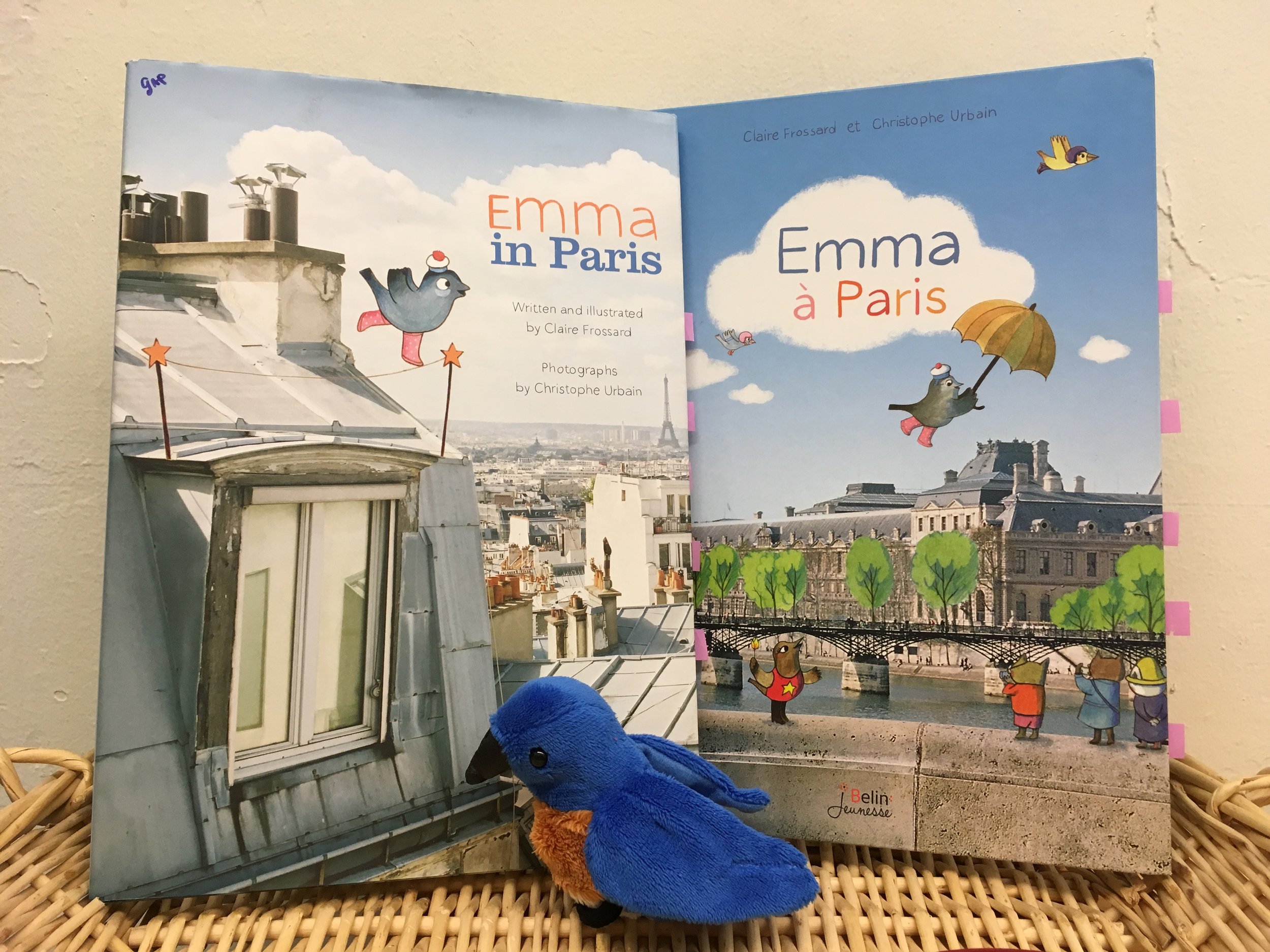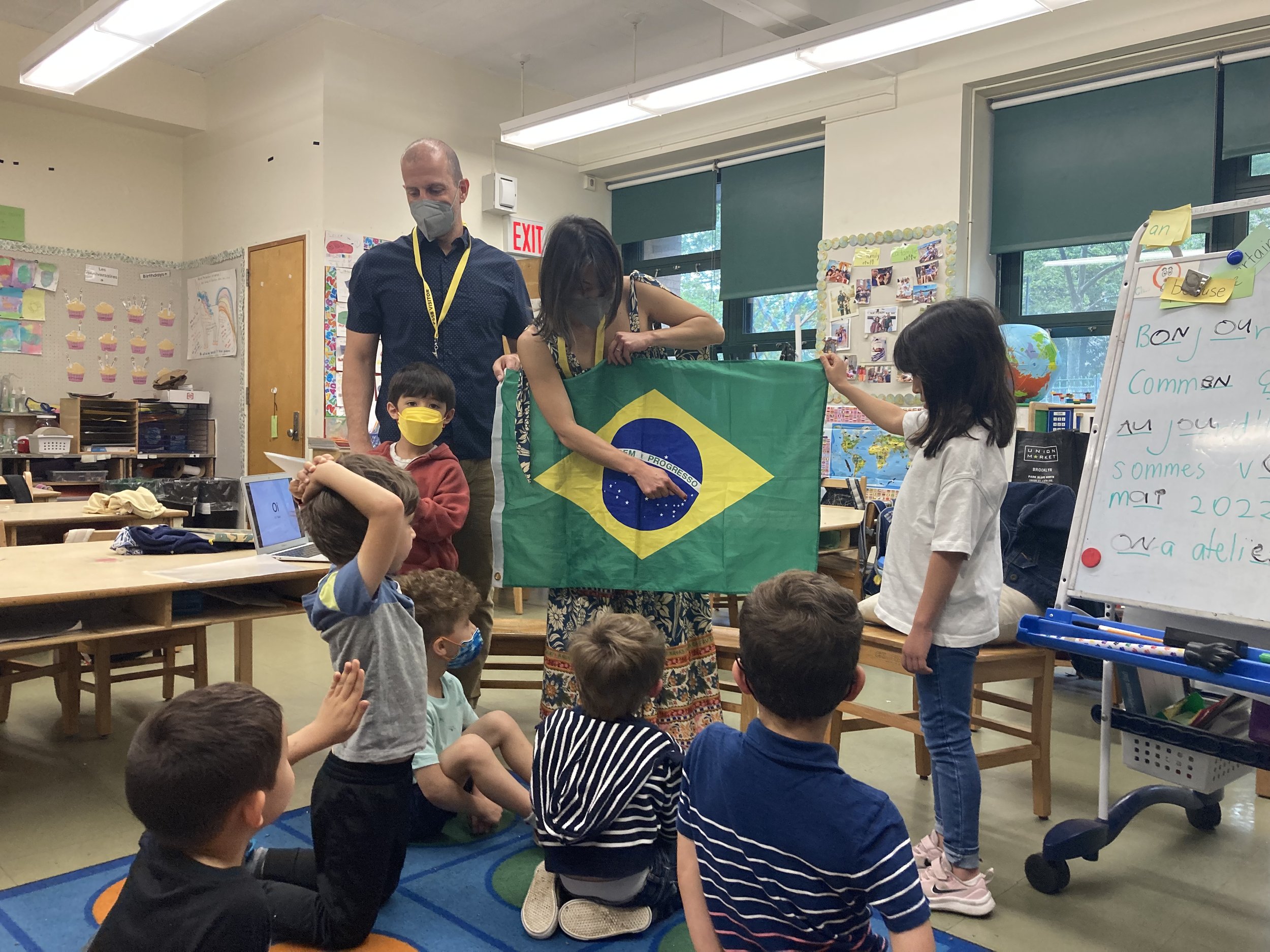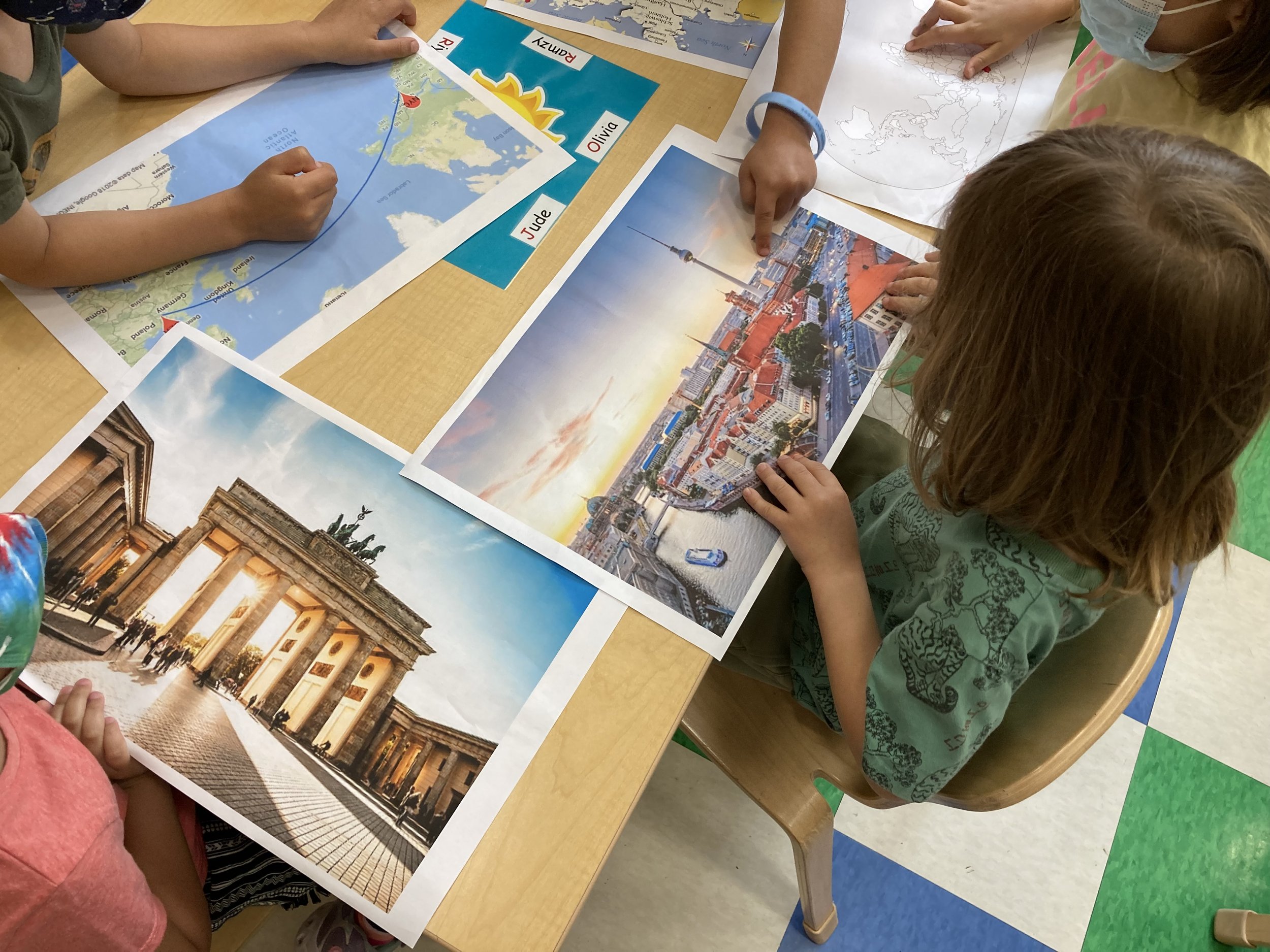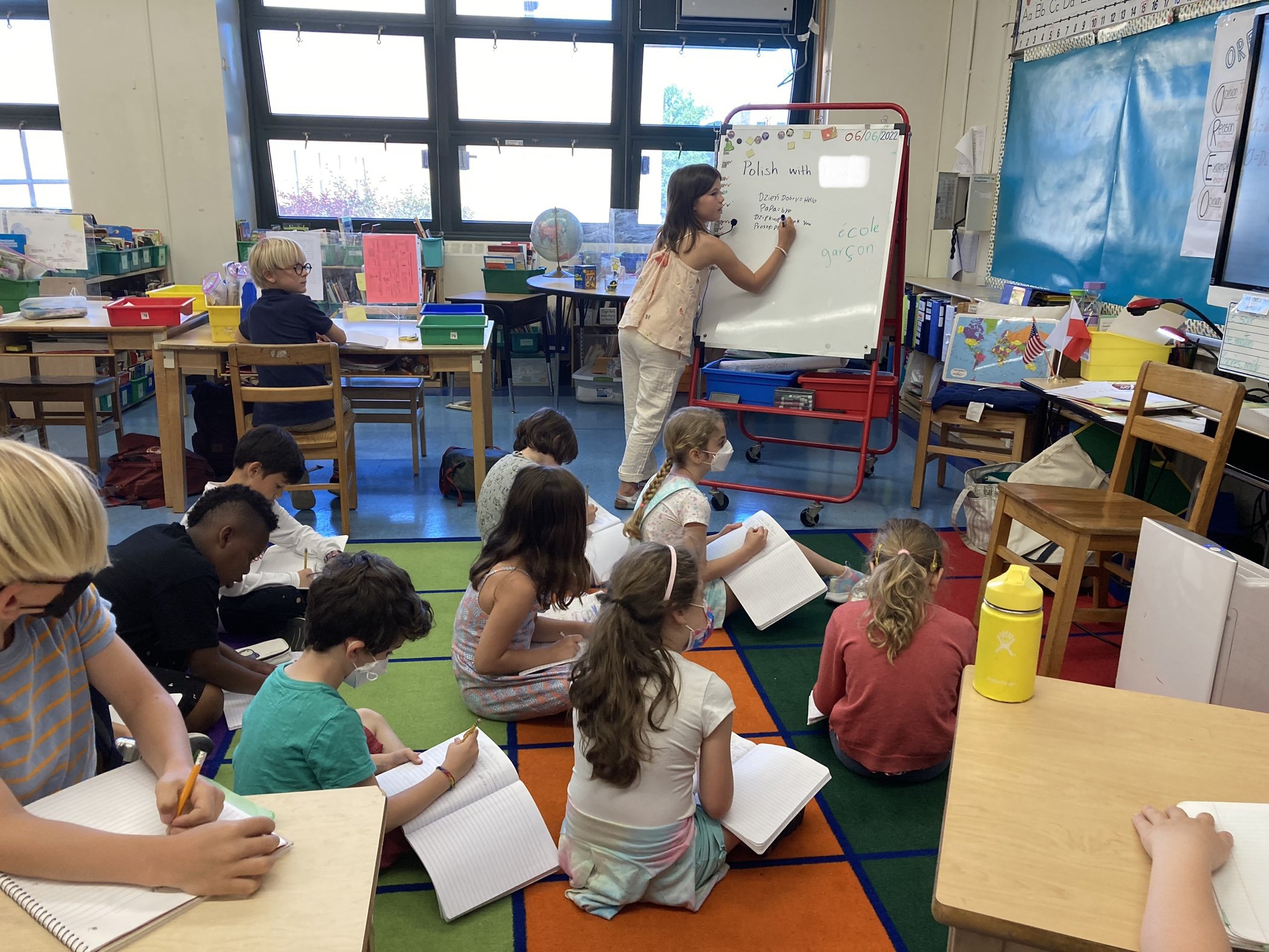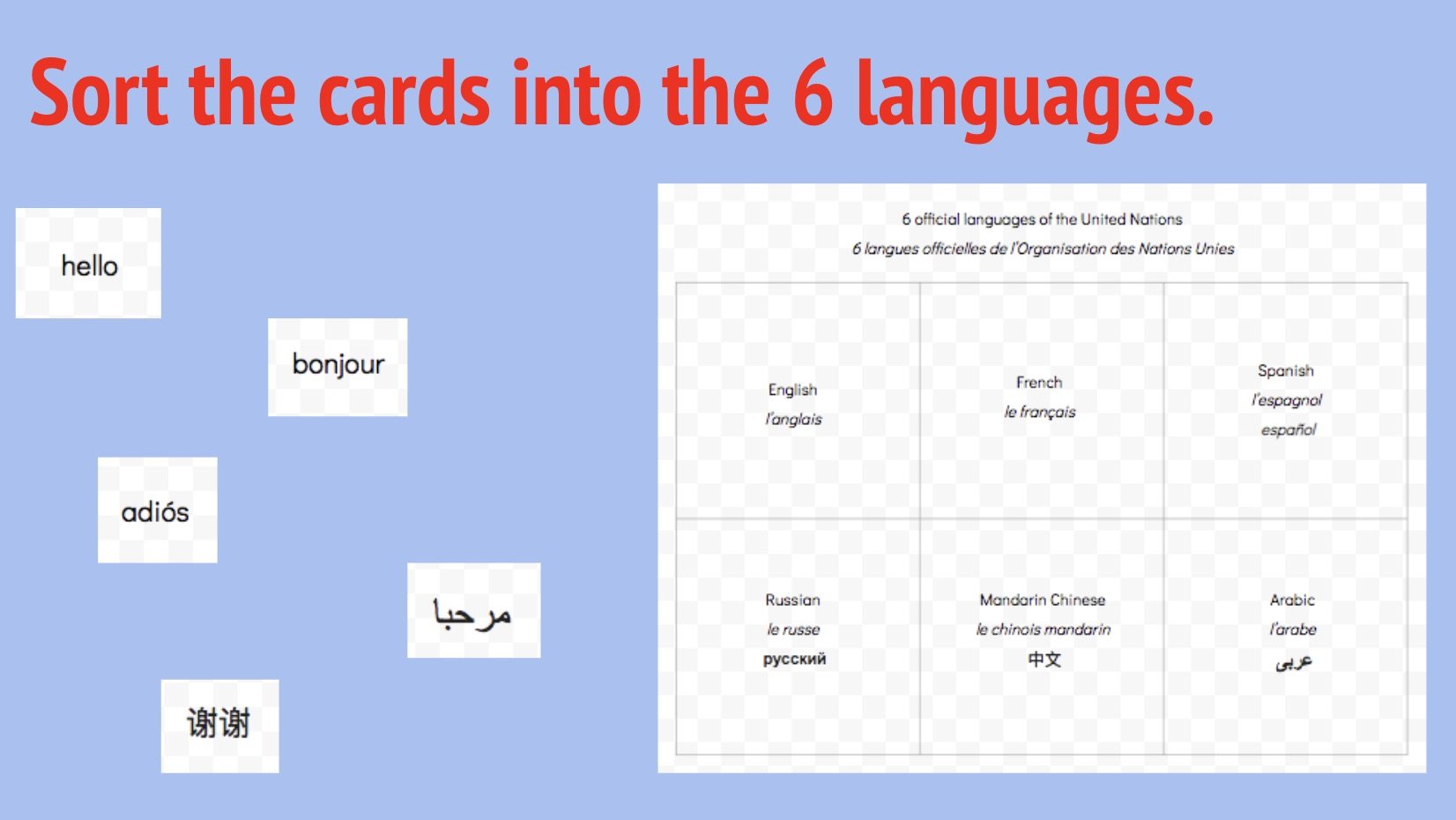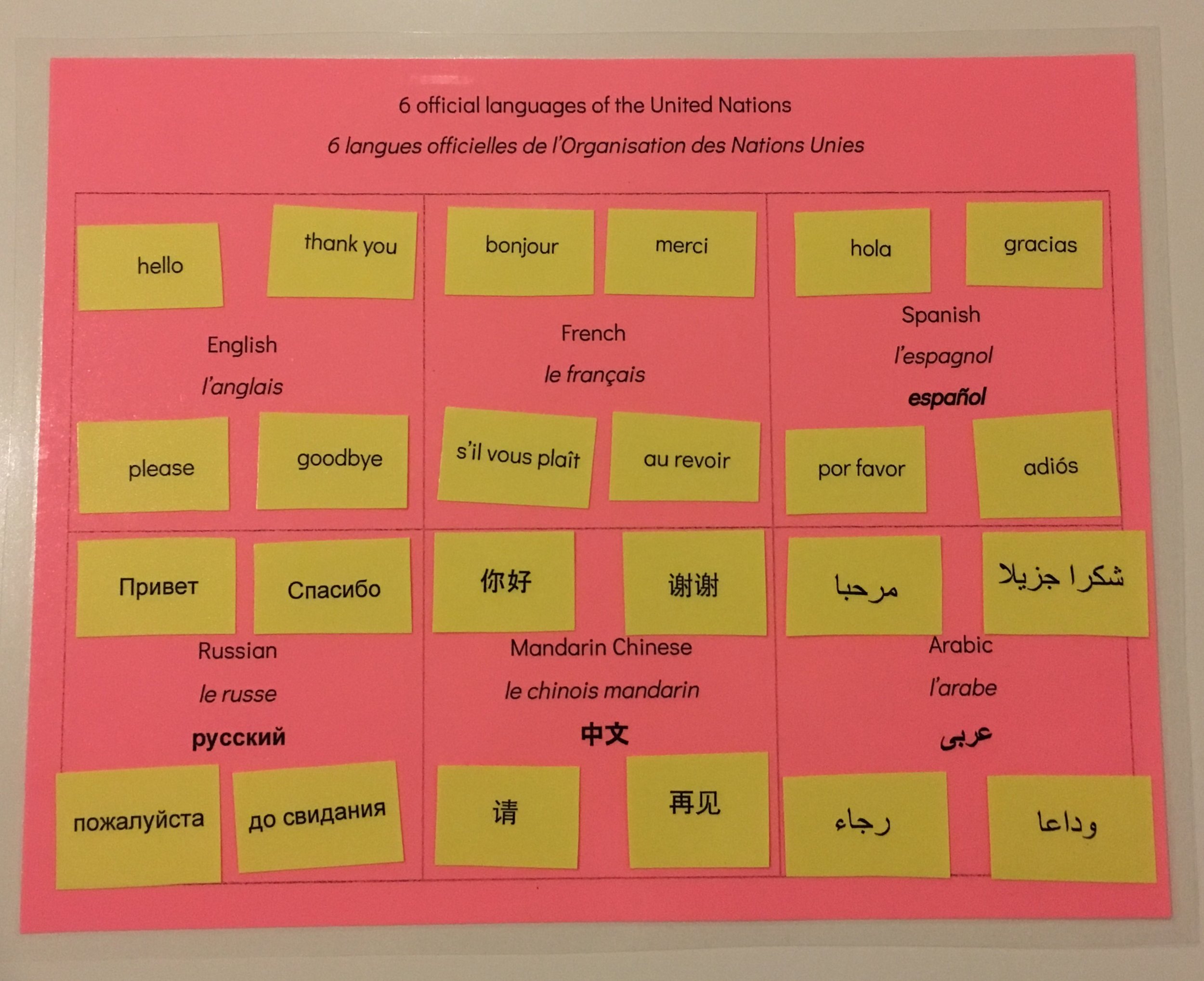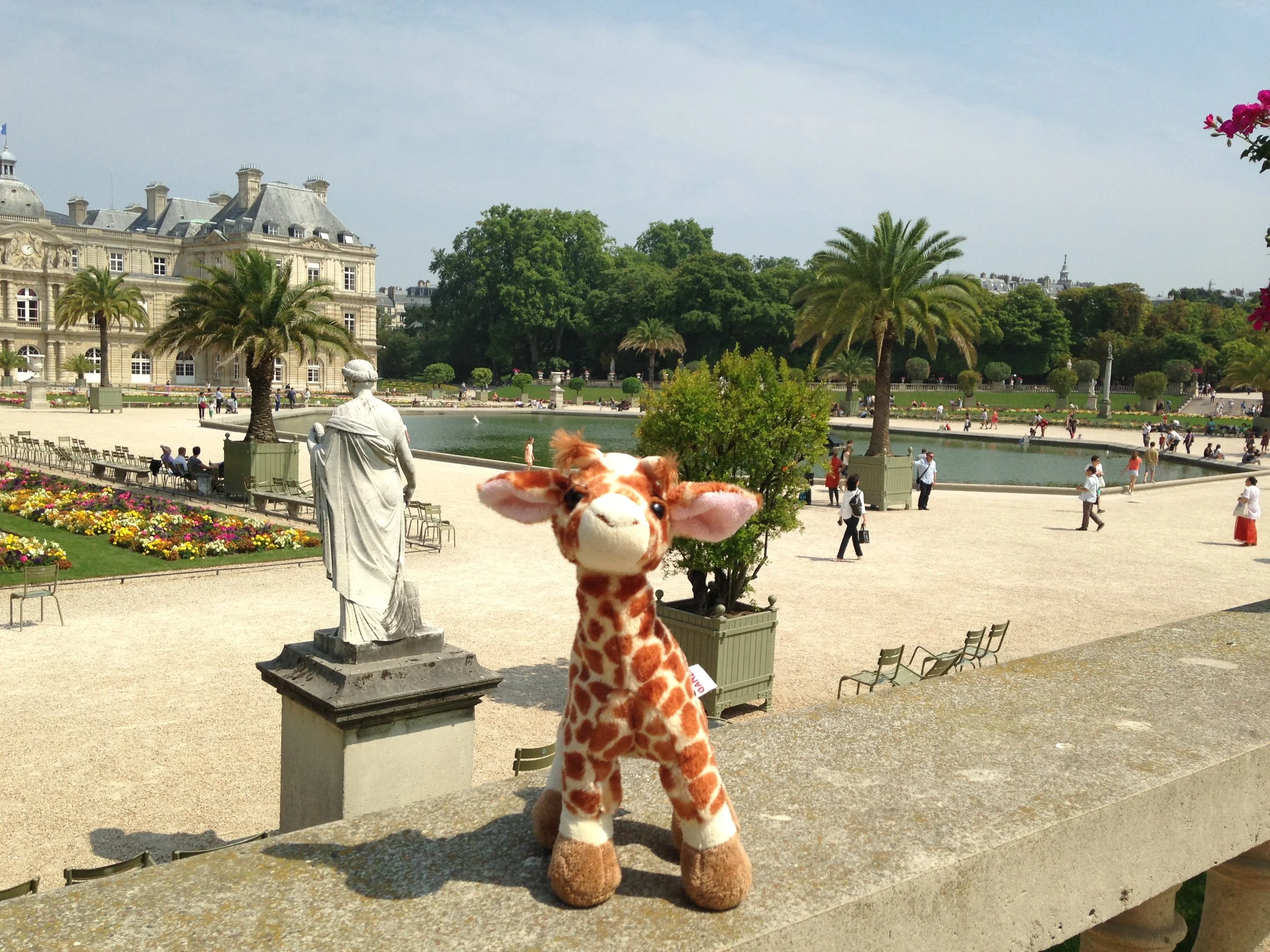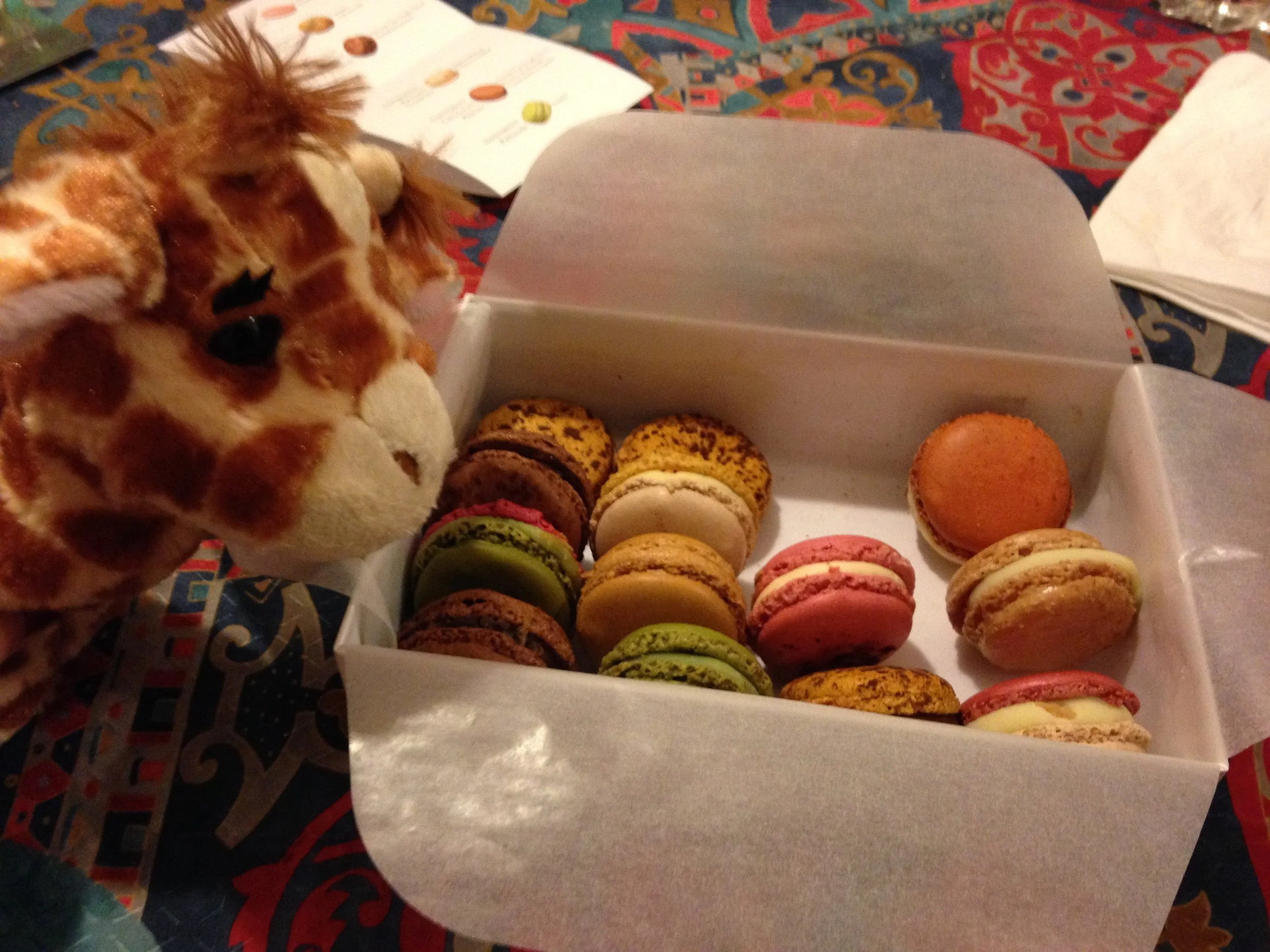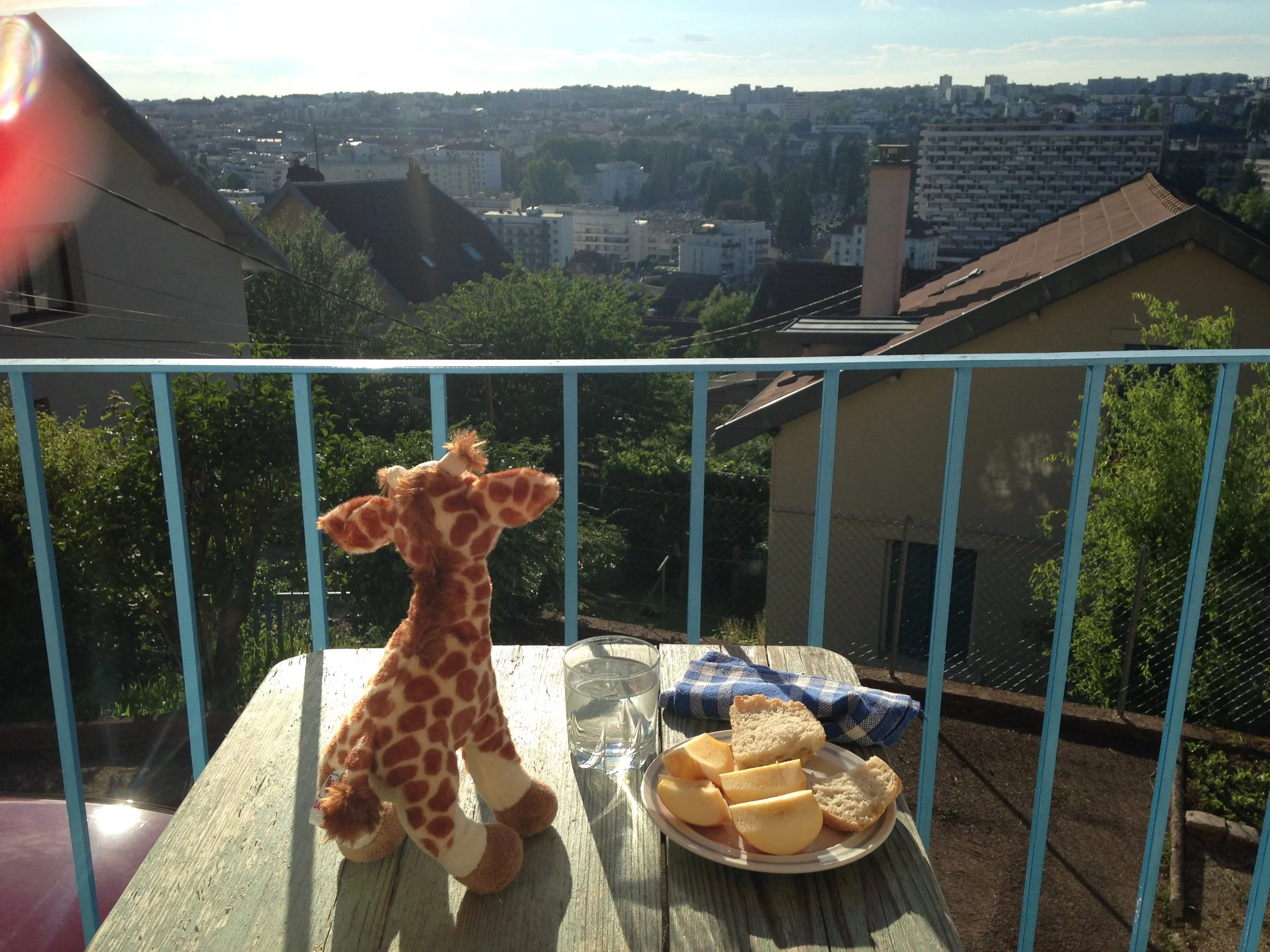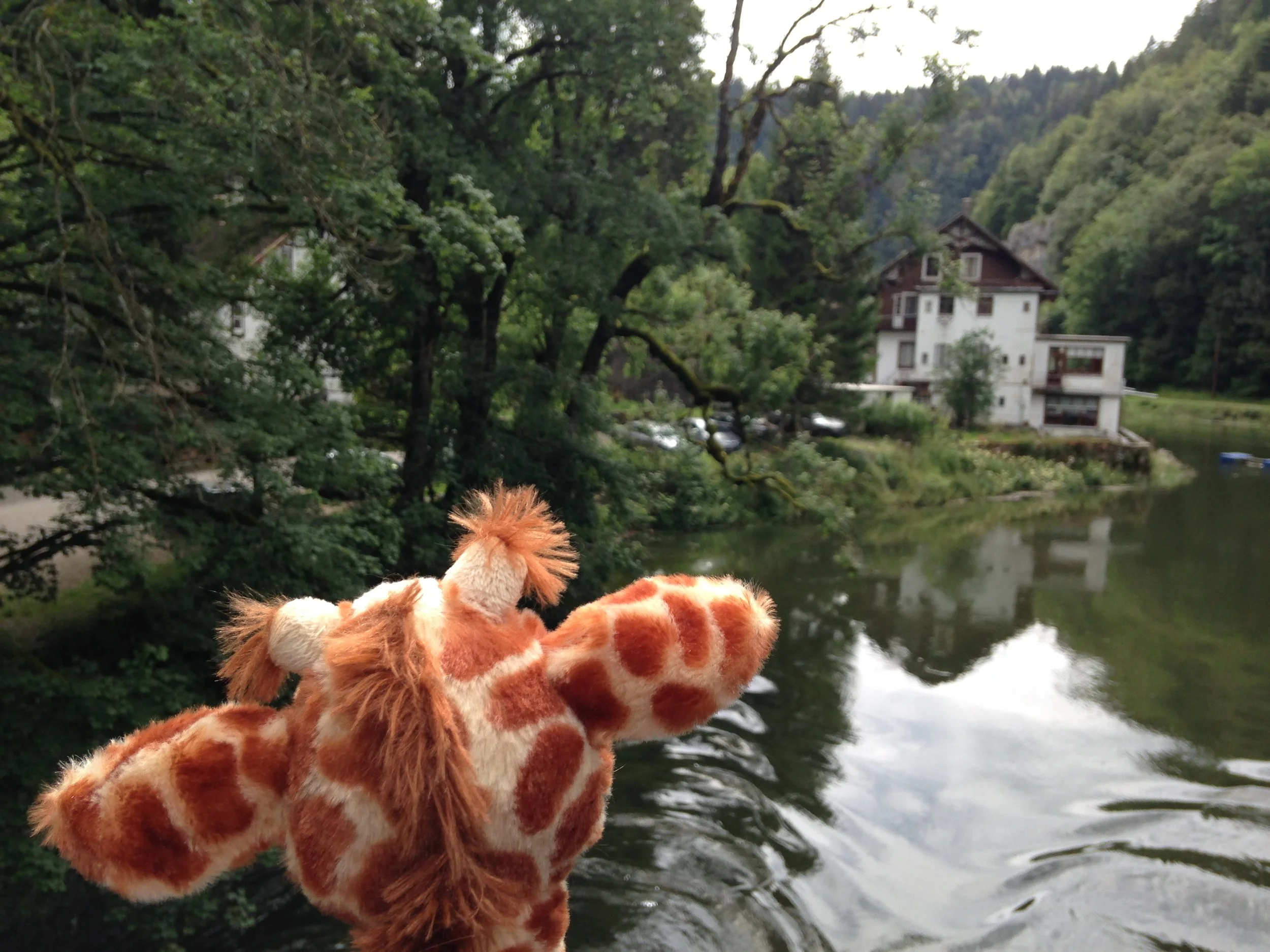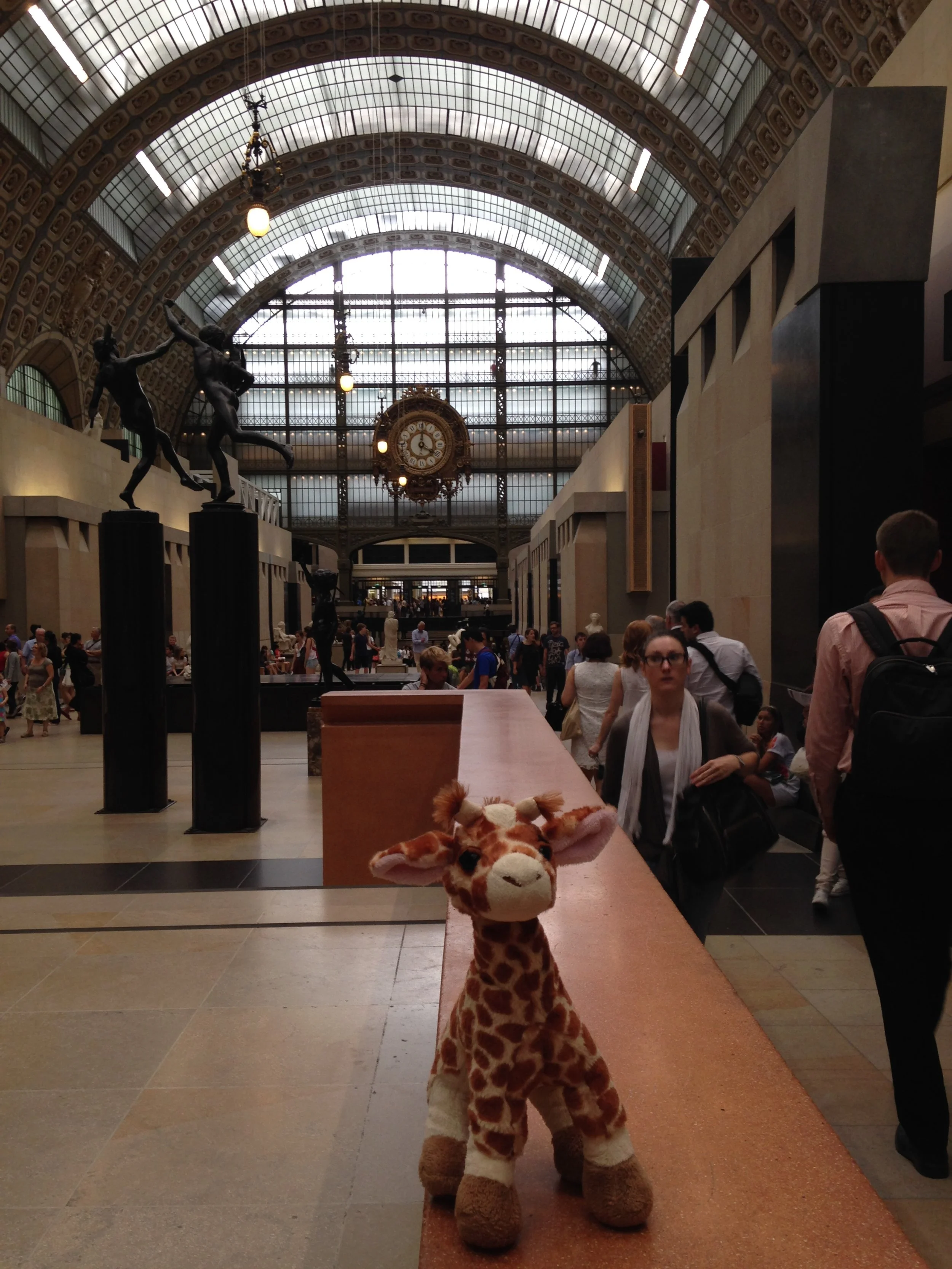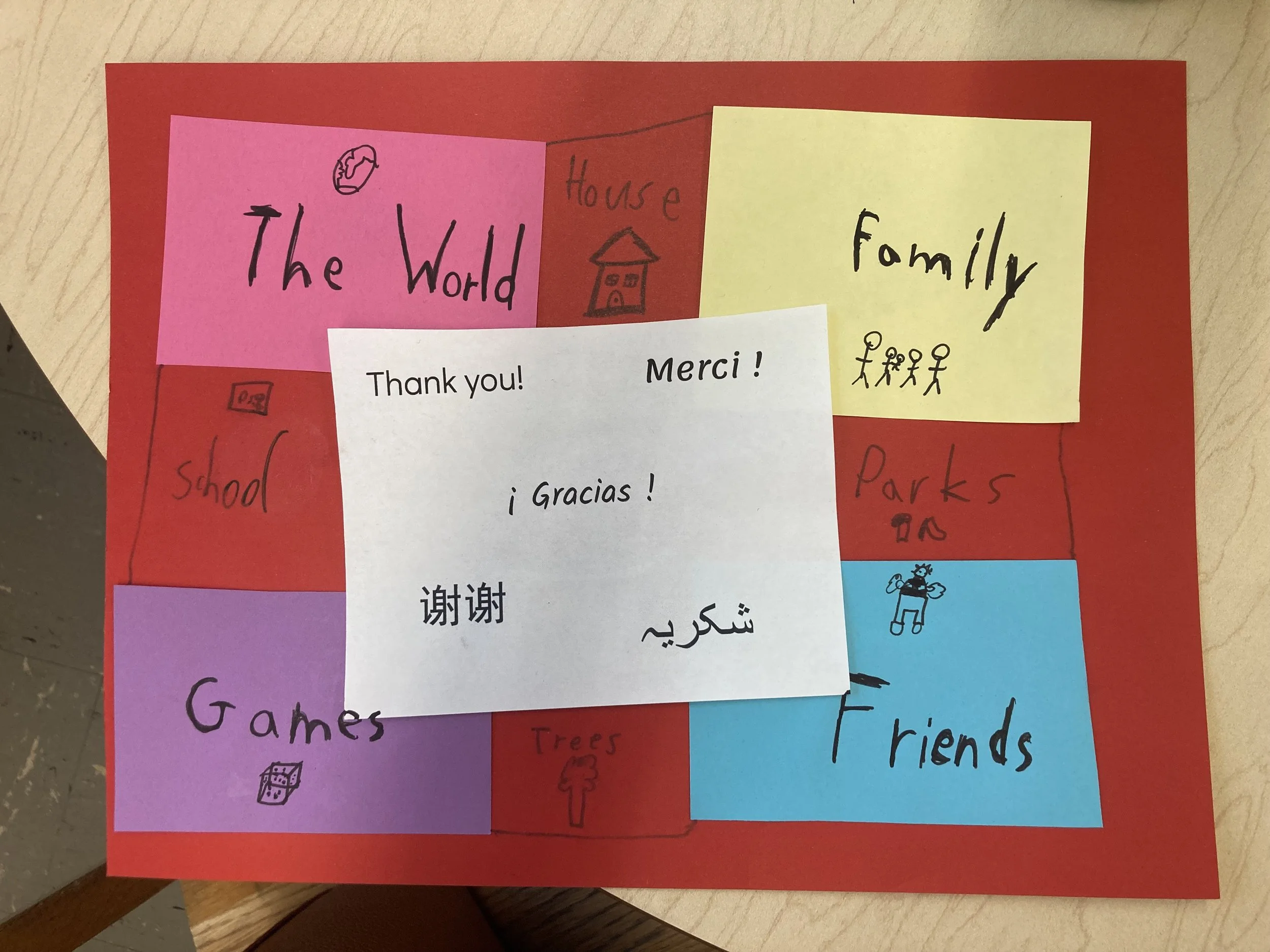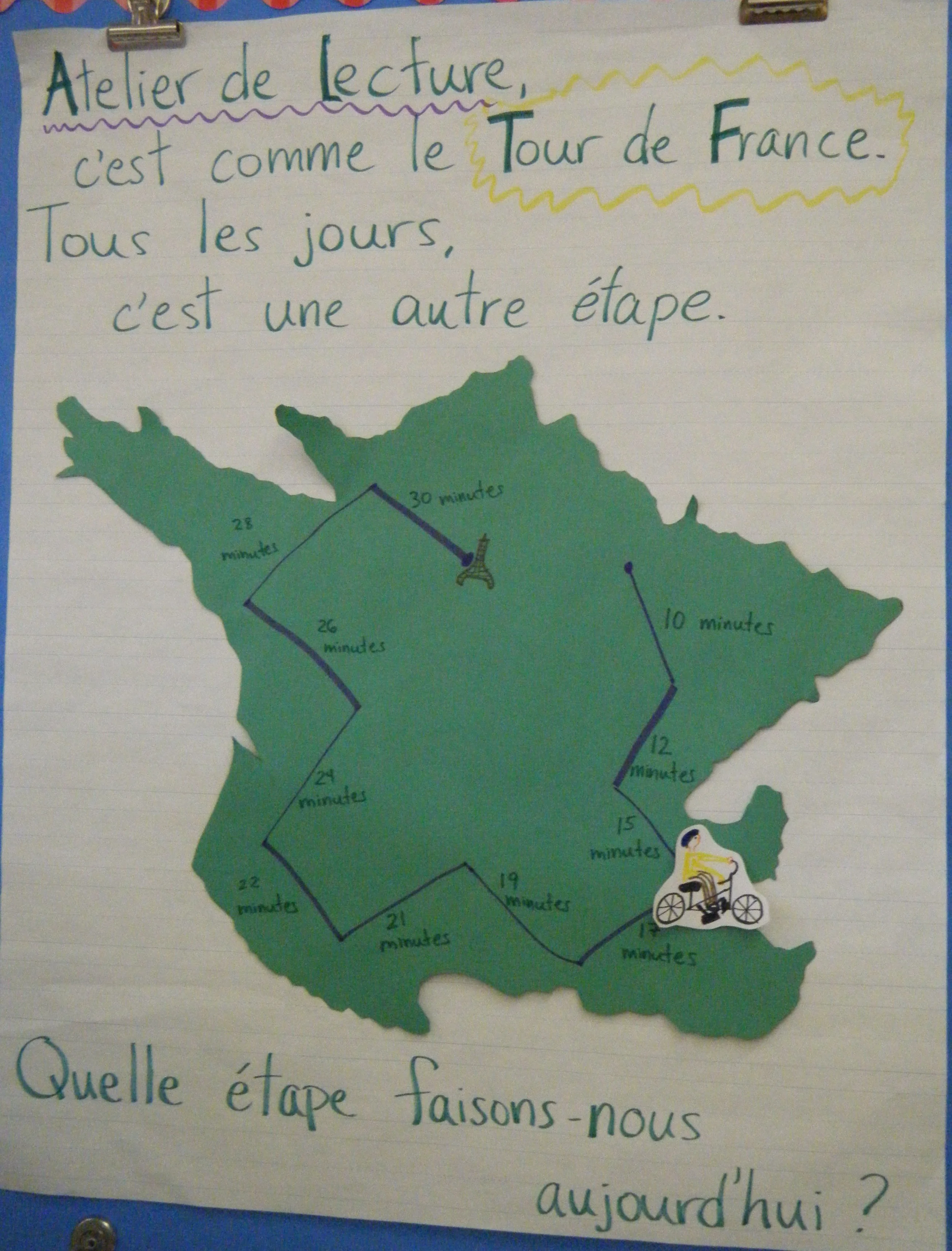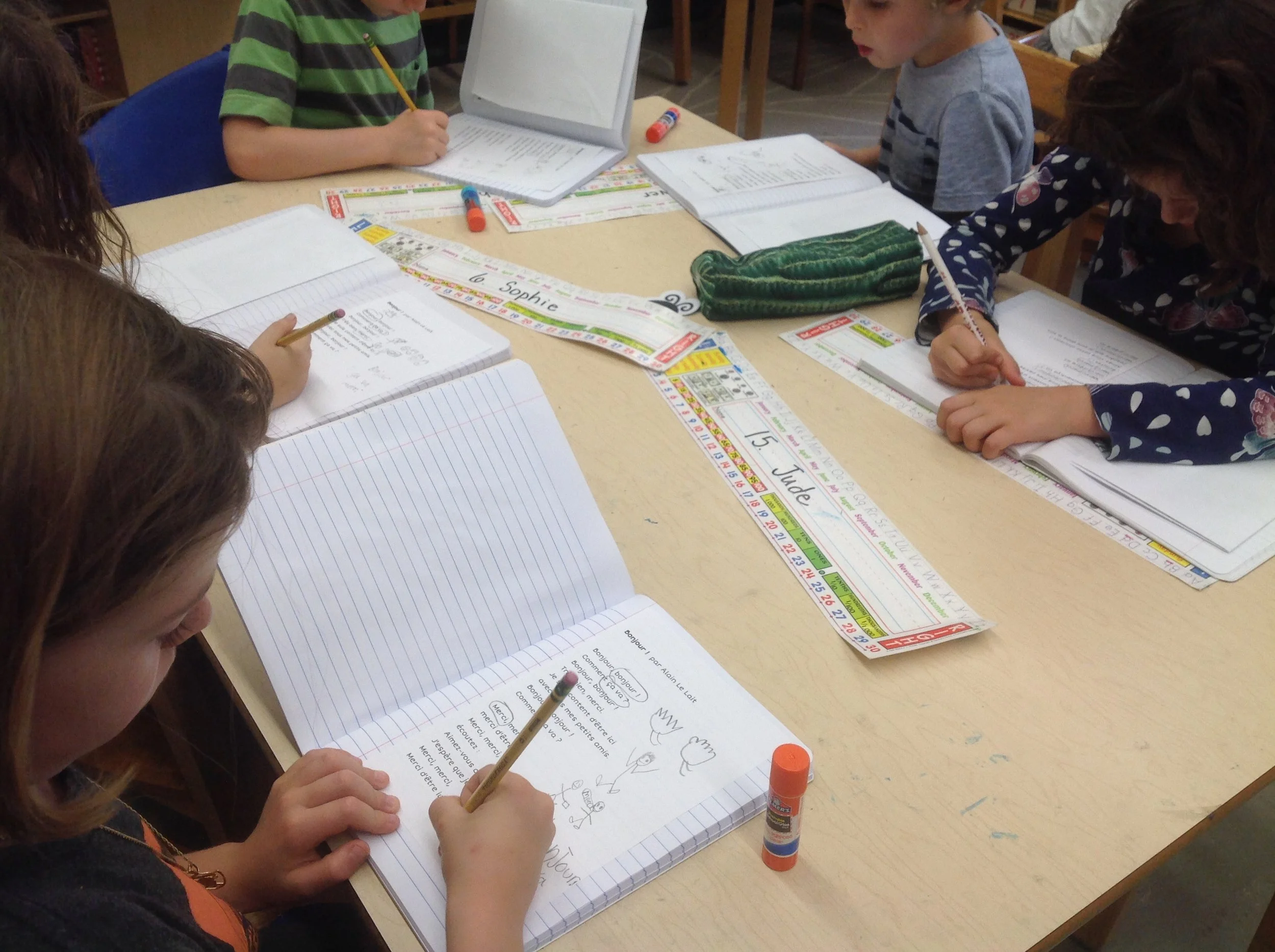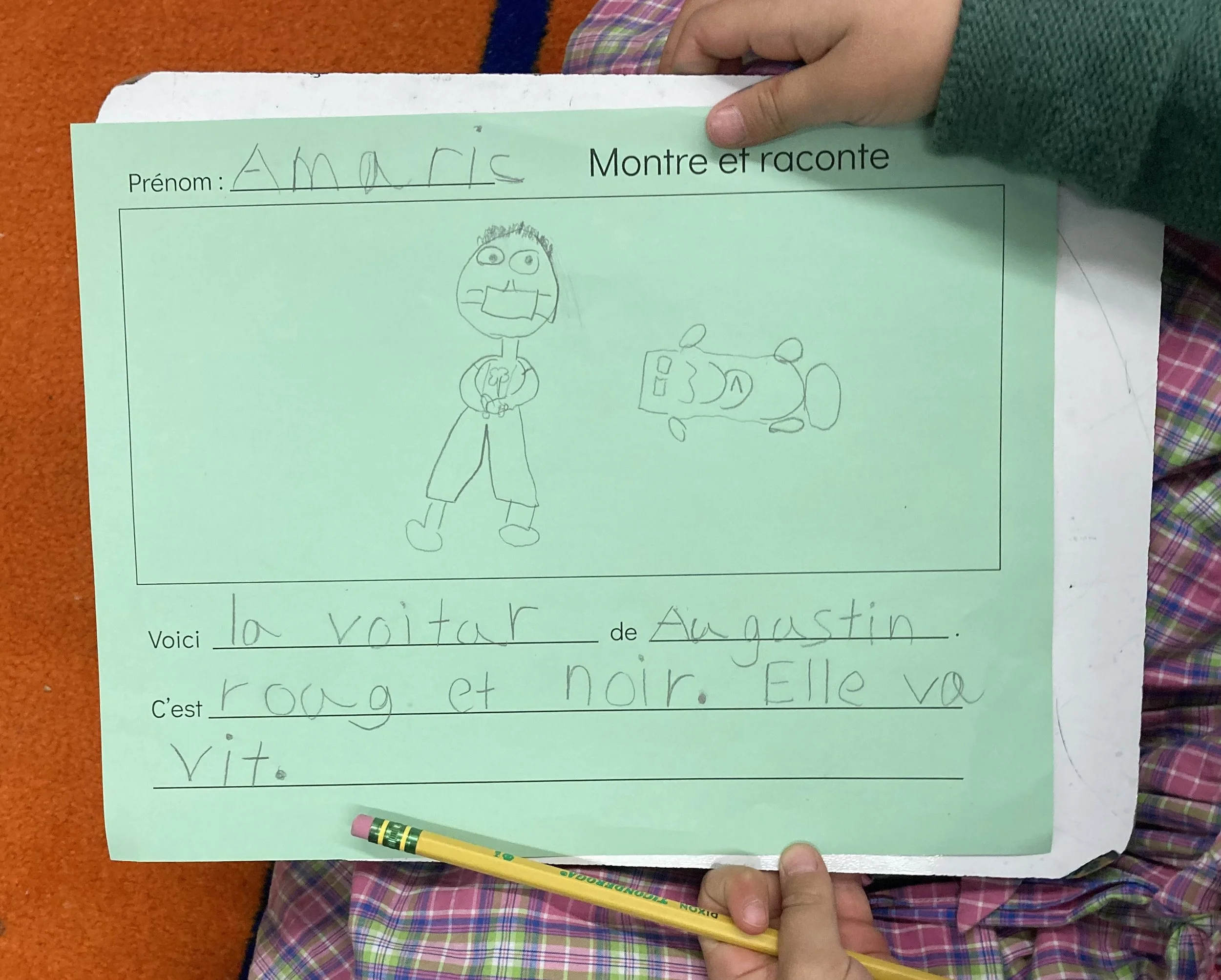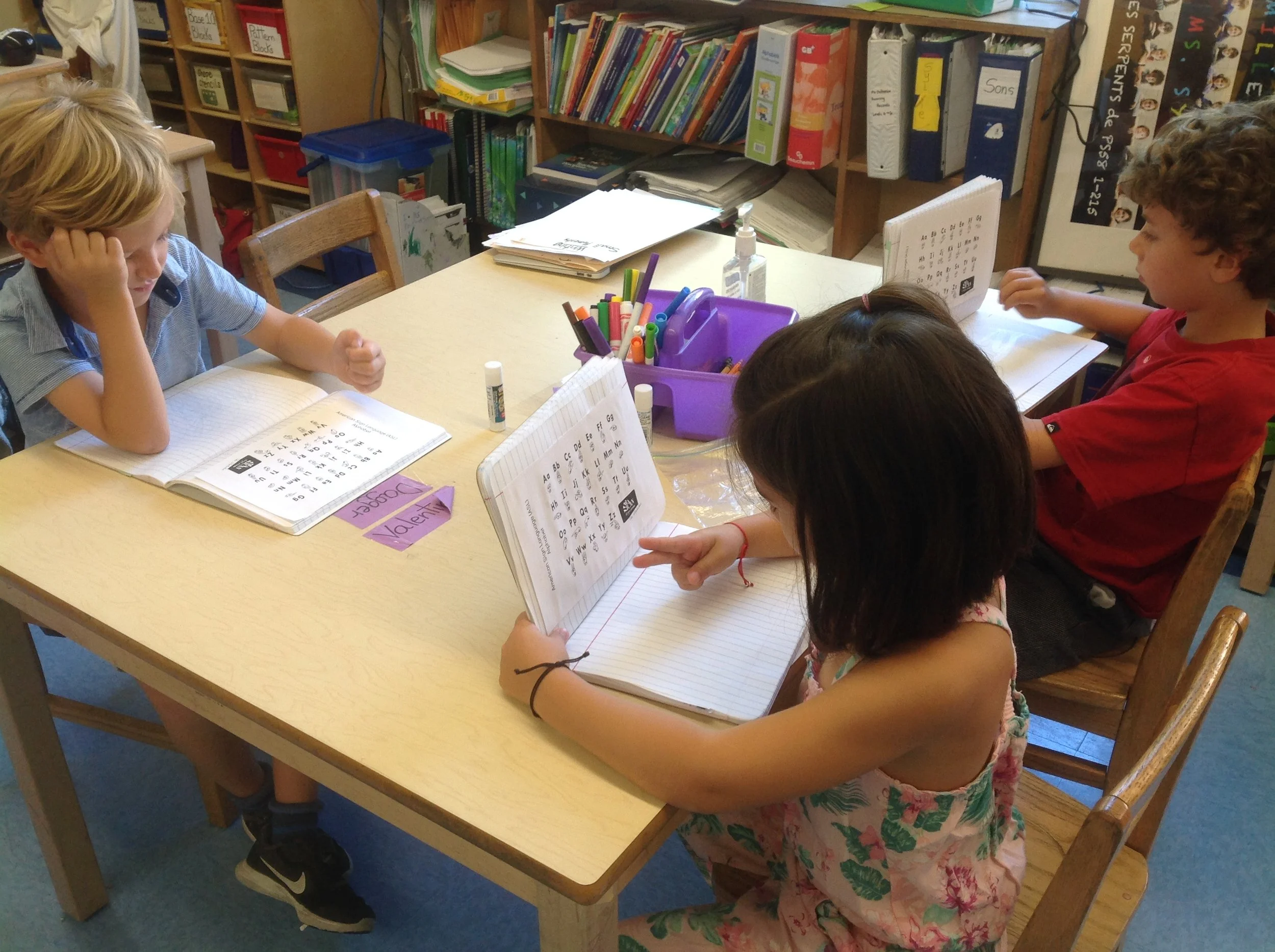Multilingual Learners
Celebrating and validating the languages and cultures of diverse communities.
Engaging students in activities designed for their unique language backgrounds, giving them the targeted supports they need to chart them on their course forward.

An interactive bulletin board, inviting school community members to add a “hello” in their own language.
Created for the launch of the Language Workshop program at PS 58 in the fall of 2016.
Notre jardin des langues
Our garden of languages
An activity to build children’s metalinguistic awareness: to validate their language backgrounds and their journeys ahead.
First we read books about speakers of many languages, such as Subway Sparrow, My Language, Your Language, and New Words, New Friends. We noticed the challenges, the flexibility, and the ingenuity of language learners in these texts.
Then students reflected on their own language beginnings, present, and possibilities. They expressed these using a code of petal colors to show what languages they speak well, speak a little, or ones they don’t know but might like to learn.
Building empathy for a language learner
creating a NEED for students to speak the new language, to a puppet who only speaks the target language
I begin my Language Workshop program for Kindergarteners by reading émilie et gregory, le petit anglais, from the émilie series of books. These students, brand-new to French, listen to this simple story that is almost entirely in a new language. However, with a dramatic reading aloud and some discussion, they quickly recognize the creativity and flexibility of language learners in an everyday situation.
Then the kids get to meet sweet Arthur, émilie’s hedgehog, who they met in the book. He only speaks French, like émilie in the story, and the kids very much want to communicate with this energetic new friend, so they need to use gestures, like the characters did in the book, or what French words they know so far, such as “Bonjour !”
As students learn more, Arthur comes back for other visits specifically designed to give them a chance to use their newest vocabulary, such as sharing how they are feeling that day, how old they are, or counting cherries Arthur gathered in the forest after learning the classic song “1, 2, 3, nous irons au bois.”
Through these playful activities, language learners build the courage to try something new by creating a safe space to try and to make mistakes.
Students becoming the language teachers, to a new friend who needs their help:
a friendly sparrow who, in Emma in Paris, travels to France hoping to meet her relatives but doesn’t know any French
In another early Language Workshop lesson for Kindergarteners, I read Emma’s Journey, in which little Emma the sparrow decides to leave her home in New York City for a new adventure in Paris. Before she sets off, little puppet Emma comes flying into the classroom, where students can teach her “bonjour,” “merci,” and “au revoir,” after their first French lesson, giving her a few words to use when she arrives in France.
Then I read Emma in Paris to the children; here they quickly see the struggles of learning a language … a few words, however helpful and polite, can only get you so far! They also see how many entry points there are into gaining confidence and fluency: meeting a bilingual friend, using a dictionary, practicing with other kind and patient speakers.
Then we take hold of surprises when they come: one morning in the fall of 2021, as we were all managing a hybrid school year while the pandemic raged on in New York City and around the world, a real sparrow flew into our kindergarten classroom. She came and went before the students arrived that day, but we were all inspired by her visit.
I love grabbing on to authentic moments like these, allowing inspiration to evolve.
Multilingual community members sharing their languages and cultures with classes
Validating and celebrating the linguistic diversity of the community, beyond the language(s) most children speak or have chosen to learn
Making connections with new sounds and new people
An annual highlight of the Language Workshop program: inviting a family member who speaks a language other than English, French, or Spanish to share a bit about their background with their child’s class.
I encourage the visitor to bring in flags and/or other symbols of their home and culture. Many also bring in maps to show where they come from, pictures of famous sites or landmarks, and children’s books written in their language.
Usually we ask the visitor to teach the students and me a few words in their language. I like to emphasize that in this context, I am often a language learner along with them.
We then invite students to try writing words some words in the new language, including in different alphabets. I again highlight myself as a risk-taker here, ready to give it a try, knowing it probably won’t be perfect on the first try.
Over the years, as Language Workshop flourished at PS 58, student veterans of the program courageously shared their languages with their classmates. What a wonderful way to take on a leadership role in their classroom.
I believe these bridges between languages and groups will hold strong for a long time.
United Nations field trip, 2nd Grade, spring 2019
a cultural and political institution that brings nations together, with the necessity of multilinguals to make diplomacy happen
With the encouragement and support of a parent, I organized a field trip to the United Nations in Manhattan from our school in Brooklyn, just a yellow school bus ride away, for my Language Workshop students.
What was most pressing for me: to prepare the students before the trip, in particular to learn a little about the history and significance of the UN. It was also crucial for the kids to understand how a place like this connects to the study of other languages and cultures: that communication is vital here, and it requires the work of many translators and interpreters to make solving international issues possible.
So, in the weeks leading up to the trip, I introduced the basic principles of the UN to my students, using pedagogical materials from the UN that I adapted into my own presentation, along with a language sort I created of the 6 official languages of the UN. Kids got to explore and compare how these 6 languages looked in writing before getting to see and hear them at the United Nations itself.
A familiar face traveling through the city of light: Gigi la girafe. Students write simple sentences to describe her journey, and then they get to take her on their own adventures together.
For the occasion of the Beijing Winter Olympics in 2022, I invited Kindergarteners, 1st Graders, and 2nd Graders in Language Workshop to go on a scavenger hunt for flags, languages, and symbols of other countries while watching the games. In class together, we explored world maps, identified flags of other countries, and browsed resources such as The Hello Atlas book and app, and other books by Manya Stojic, and Jonathan Litton.
Other methods for language learners to forge ahead in playful, authentic, meaningful ways, including Pat Mora’s book and Hélène Vanthier’s multi-sensory method Zig-Zag.










